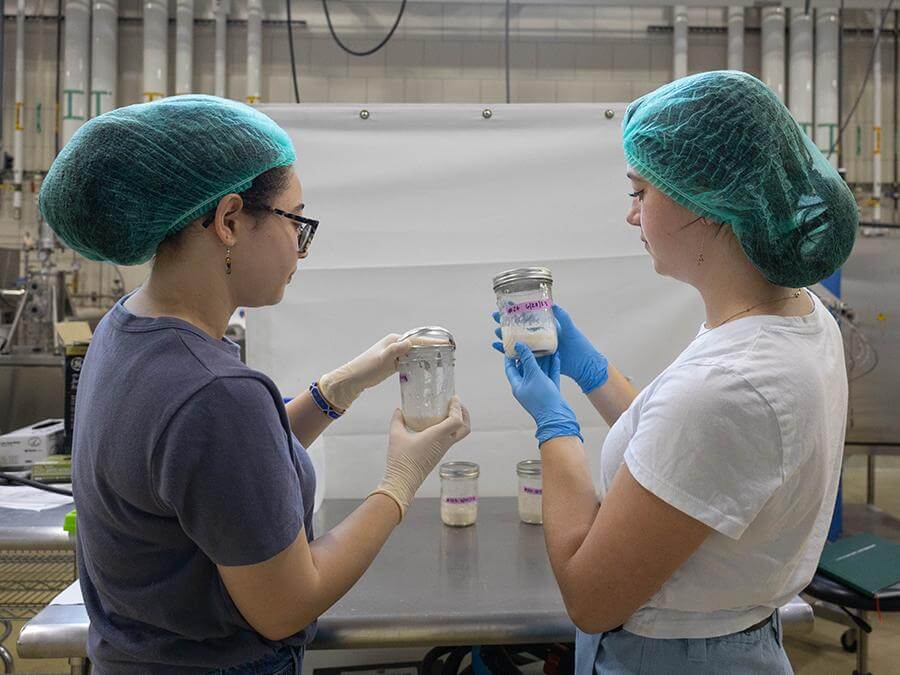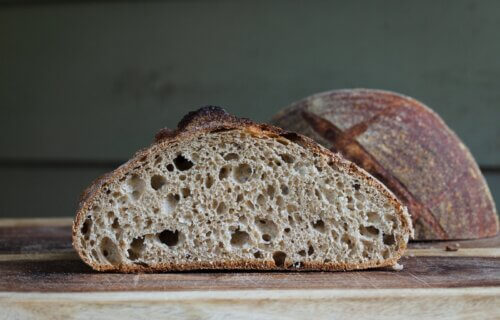UNIVERSITY PARK, Pa. — Celiac disease, a chronic autoimmune disorder triggered by the consumption of gluten, can seriously limit one’s food options, both at home and especially while dining out. However, researchers from Penn State and Colorado State University may have found a dietary game changer for those living with Celiac or a related gluten intolerance. At the heart of this research lies sourdough bread. Why? Sourdough contains less gluten than other breads, making it more tolerable for people with gluten sensitivities.
The research team is currently studying whether bacteria in the yeast starter needed to make sourdough bread might help reduce gluten across various other bread products.
Gluten is a protein naturally found in cereal grains, including wheat, barley, and rye, known to trigger an immune response in people with gluten intolerance and celiac disease. Gluten intolerances are generally characterized by adverse gastrointestinal symptoms after eating gluten-rich foods. These conditions are estimated to affect approximately seven percent of the U.S. population, according to the National Institutes of Health. Among that group, one percent suffer from celiac disease. The incidence of celiac disease has risen 7.5 percent annually over the last several decades, mirroring the continually increasing prevalence of autoimmune disorders worldwide.
Now, co-principle investigators Josephine Wee, a Penn State assistant professor of food science, and Charlene Van Buiten, a Colorado State University assistant professor of food science and human nutrition, have received a $500,000 grant provided by the U.S. Department of Agriculture. It will allow them to not only study if sourdough starter microbiomes can detoxify gluten in bread — making them safe for individuals with celiac disease — but also hopefully ascertain whether food scientists can manipulate them to boost both bread quality and safety.

Conventional bread dough uses baker’s yeast to replace naturally present yeast and bacteria, known as sourdough fermentation, Prof. Wee notes. Sourdough bread is made by the fermentation of dough with wild Lactobacillaceae and yeast, and leavened with “starter cultures,” or communities of naturally occurring bacteria and yeast portioned and maintained via a series of passages at room temperature. Collectively, these communities are known as the sourdough microbiome.
“A study of 500 sourdough starters collected from around the world showed that no two starters are exactly alike, and presently, little is known about the ability of sourdough microbiomes,” Prof. Wee says in a media release. “Outcomes from this work will use whole food microbiomes to develop fermentation technologies that will address the next generation of consumer demands for high-quality ‘clean label’ products with reduced gluten immunogenicity.”
Immunogenicity refers to the ability of cells or tissues to spark an undesirable immune response. Clean label means making a product using as few ingredients as possible and ensuring those ingredients are items consumers recognize and consider wholesome, or less processed. Ingredients they may use at home, for instance.
The production of bread on a worldwide scale exceeds 100 million tons annually and is valued at $201 billion, according to Custom Markets Insights. However, bread is also a major food waste contributor due to spoilage, overproduction, and shifting consumer preferences. Prof. Wee adds that current bread-manufacturing practices fall short of meeting demands, necessitating innovative approaches aimed at improving quality and reducing waste.
“With combined expertise in food microbiology and nutritional biochemistry, our team is interested in characterizing the relationship between the sourdough microbiome, bread quality and gluten immunogenicity,” Prof. Wee concludes. “We hope the findings of this research will influence functional outcomes of bread quality and safety.”
You might also be interested in:
- Multigrain does not mean whole grain — How to avoid misleading bread labels
- Best Gluten-Free Fast Food Options: Top 5 Alternatives Most Recommended By Experts
- Best Gluten-Free Snacks: Top 5 Pantry Staples Most Recommended By Experts


Ceoliac Disease is an autoimmune disease that responds an autoimmune response to gluten a PROTEIN. NOT a BACTERIA that can be detoxified. THIS article IS HARMFUL to the health of people with Ceoliac Disease.
You have misread the ‘article’ it does not say celiac is from a bacteria, rather that bacteria may reduce gluten (by consuming it)
The article is still very wrong in that it says celiac is an intolerance to gluten. Gluten intolerance and celiac are two separate conditions
A person with celiac suffers lifelong damage to the intestines with each exposure. The only solution for celiac, at the moment, is a complete abstinence from wheat.
Someone with gluten intolerance can consume gluten in small amounts with some discomfort.
Such a bread with reduced gluten might be tolerable and helpful to Gluten Intolerance sufferers, it is not useful at all for people with celiac
As a celiac born in 1947 before the cause was determined, I would add to the above that the bad grains for celiacs include wheat, barley and rye, not just wheat.
Frustrating to see gluten intolerance and celiac disease used so interchangeably in this article. They are not the same and this I a lost opportunity to educate your audience.
Intolerance is a discomfort after eating gluten whereas Celiac is an autoimmune response. One is much more severe than the other and this study is likely not targeted to the celiac audience since even minute amounts of gluten will cause severe reaction.
Good to know Sourdough starter is a potentially healthier grain usage for sensitive human digestion. This is good science.
The motivation to now ‘create’ frankenfood, using this knowledge is where I draw the line.
Keep scientists and paid for by;… private, for profit, Industrial/agricultural Corporations, out of my food.
We’ve been down this road for far too long not to have seen the negative outcome of these suppositions on the Health & Wellness of our People & our Planet.
Don’t screw up and manipulate another source of healing potential on this planet Please.
So sourdough naturally has less gluten or a gluten free version will be healthier for gluten intolerant people… which is it?
Simple Kneads Gluten Free Bread
Website – simplekneads.com
Been using sourdough since 2014. Delicious GF artisan bread.
Check it out!